
漢德百科全書 | 汉德百科全书
 Commonwealth of Nations
Commonwealth of Nations


 Australia
Australia
 Commonwealth of Nations
Commonwealth of Nations
 Women's Soccer World Cup 2023
Women's Soccer World Cup 2023

 Party and government
Party and government
 Group of the twenty most important industrial and emerging countries
Group of the twenty most important industrial and emerging countries


Australien (amtlicher deutscher Name; englisch Commonwealth of Australia, deutsch veraltet Australischer Bund) ist ein Staat auf der Südhalbkugel der Erde, der die gesamte Landmasse des australischen Kontinents, die ihr südlich vorgelagerte Insel Tasmanien, die subantarktische Macquarieinsel mit ihren Nebeninseln und als Außengebiete die pazifische Norfolkinsel, die Kokosinseln, die Weihnachtsinsel sowie die Ashmore- und Cartierinseln und die Heard und McDonaldinseln im Indischen Ozean umfasst. Seit dem Antarktis-Vertrag von 1933 erhebt das Land auch Ansprüche auf das australische Antarktis-Territorium. Seine Nachbarstaaten sind Neuseeland im Südosten sowie Indonesien, Osttimor und Papua-Neuguinea im Norden.
Australien hat etwa 25,3 Millionen Einwohner und ist dünn besiedelt. Mit einer Fläche von mehr als 7,6 Millionen km² ist es der sechstgrößte Staat der Erde.[7] Die Hauptstadt ist Canberra, die größte Stadt ist die Metropole Sydney. Weitere Ballungsräume sind Melbourne, Brisbane, Perth, Adelaide und Gold Coast.
Australien zählt zu den wohlhabendsten Ländern der Welt. Auf dem Index der menschlichen Entwicklung der Vereinten Nationen nahm es 2019 den sechsten Rang ein.[8] Das Land verfügt über eine hochmoderne Service- und Dienstleistungsökonomie und über bedeutende Rohstoffvorkommen. Seine Kultur und Wirtschaftskraft machen es zu einem attraktiven Ziel für Migranten, allerdings legt die Migrations- und Asylpolitik Australiens strenge gesetzliche Kriterien für die Einwanderung an.
澳大利亚联邦(英语:Commonwealth of Australia[7]),通称澳大利亚(Australia[8][9],缩写为 AU、AUS),中文环境下(尤其是台湾、香港、澳门、广东省部分地区等地)常使用“澳洲”代替“澳大利亚”(狭义),是一个位于南半球中北部、东半球东部的议会制君主立宪制国家。全国整体属于大洋洲,是大洋洲面积最大、南半球面积第二大和全球面积第六大的国家。澳大利亚国土囊括了整块澳大利亚大陆、塔斯马尼亚岛及圣诞岛等数个海外岛屿,国土总面积7,692,024平方公里(km²),和美国本土的面积相近。根据2019年的普查数据,全国人口约为2522万,居世界第54位。该国没有陆上邻国,所有近邻国家均与其隔海相望。其中东南部有新西兰;东北部有巴布亚新几内亚及瓦努阿图、斐济等太平洋岛国;北部及西北部是印度尼西亚、东帝汶等国。澳大利亚的首都为堪培拉,最大城市为悉尼,本土划分为六个州及两个领地。主要城市有墨尔本、珀斯及布里斯班等。经济社会发展上,属于发达国家和资本主义国家。国内发行与流通的货币为澳大利亚元(Australian Dollar, 简写为AUD),是全球第五大流通货币。
澳大利亚大陆在远古时期即有人类居住生活,但其直至17世纪的大航海时代才被发现从而与外部人类社会接轨。18世纪末期始成为英国殖民及囚犯流放的地点,后因发现珍贵矿藏而成为移民、投资兴业的热点。获益于地理位置较为孤立的特点,澳大利亚自被殖民以来几未受到国际战争波及,内部也鲜有战乱、冲突的发生。仅北部城市达尔文曾受到第二次世界大战的战事影响(但在两次世界大战及朝鲜战争等战役期间,均有澳大利亚籍士兵远赴欧洲、朝鲜半岛等主要战场支援英国、联合国等国家及组织的军事行动)。
在自身资源禀赋、欧洲成熟的近现代工农业文明植入和英国带来的良好商业法规共同组成的良性发展环境下,自19世纪中后期始,澳大利亚逐步被建设发展成为了自由民主程度、社会经济发展程度与国民生活质素均属世界前列的发达国家。然而澳大利亚大陆上的原住民(Aborigines)却因此在一些方面深受其害(包括“失窃的一代”等事件),事后澳大利亚政府曾为此致歉,并逐渐努力改善和保障原住民的生存发展条件和各项权益,情况至今已大有改观。
澳大利亚的独立运动与进程始自1901年,原有的六块英属殖民地(即现在的州份)组成了澳大利亚联邦,从此澳大利亚开始逐渐脱离英国并独立行使作为国家的主权,直至1986年通过法令完全脱离英国正式成为独立国家。唯君主立宪制未曾变动,至今仍尊英国女王为君主。
从地理角度来看,澳大利亚是世界上唯一一个国土覆盖整块大陆的国家。国际相关地理标准将澳大利亚大陆确定为全球最小的大陆,即凡是面积小于其的陆地均视为岛屿(因此世界上最大的岛屿为格陵兰岛),大于等于其的方可视为大陆。[10]同样获益于相对孤立的地理位置及较晚被发现垦荒开发的历史,澳大利亚当地为数众多的自然遗产鲜少遭遇各种开发及毁坏,使不少生于斯产于斯的古老珍贵动植物种得以存活至今。如鸭嘴兽、袋鼠还有树袋熊等,这些也构成了极高的游览观光及科学研究价值,澳大利亚政府亦非常重视对这些珍贵自然遗存的保护。澳大利亚和美国是并列拥有世界自然遗产最多的国家[11]
该国地广人稀,平均人均拥有国土面积0.353平方公里,是世界人口密度最低的国家之一。全国人口集中分布于东部沿海、各州、领地首府城市及西部沿海城市珀斯附近等地区。在人口集中聚居的地区城市化、现代化程度较高;人口稀疏却占据绝大多数面积的地区(如中西部的沙漠、旱热区)等则反之,因其极端自然条件不甚适宜人类生存[12]。澳大利亚辽阔的国土横跨经纬度范围巨大,所以其有着不同气候下多样的自然景观,包括热带雨林、别称为“红色中心”的大维多利亚沙漠、吸引很多旅客的海滨及驰名遐迩的自然遗产大堡礁及乌鲁汝(艾尔斯巨石)[13][14][15]。
在人口的组成及文化谱系上,与美国类似,作为殖民地的历史使澳大利亚成为了一个本地原住民、各种族与各国籍移民人口混居的国家。各类移民及其后裔在现今人口比例中占绝大多数,其中又以欧洲裔为多,占到了83%。来自欧洲以外的其他地区移民和原住民目前占到总人口的17%。也因此该国是一个多元文化的聚合体,可览多国语言、习俗及特产于一域。但根本性的政治、经济、流行文化、教育等元素与架构仍与其曾经的宗主国英国相近甚至趋同,英语亦为其官方行政及民众生活中最主要的流通语言。在国旗的左上角也至今保留有整幅的英国国旗图案。
经济上,矿产资源开发、畜牧业、乳畜业、旅游观光以及中高等教育业等是该国获得收入的支柱产业,素有“骑在羊背上”与“坐在矿车上”的国家之称。澳大利亚是全球第13大经济体,人均国民生产总值排名世界第9,并被瑞士信贷集团列为世界财富中值最高的国家[16]。澳大利亚的军事支出排名世界第13。澳大利亚人类发展指数高居世界第2,并在多项指数与排名例如生活质素、健康医疗、教育、社会福利、经济自由度、媒体言论自由度、公民政治权利之保障与延伸中名列前茅,因而成为世界上的移民及留学热点之一,特别是吸引许多邻近的东亚及东南亚国家人口。澳大利亚被《福布斯》列于2020年退休宜居国的名单中[17]。
国际事务方面,澳大利亚是联合国、20国集团、英联邦、太平洋安全保障条约、经济合作与发展组织、亚太经合组织及太平洋岛国论坛的成员,参与程度积极。因地理位置与亚洲东部及南部相近,其与新西兰和东亚特别是中国的经济、文化关联相对其它西方发达国家要高。双方经济互补性、相互依存度大,人员贸易往来多且繁,双方政府对于彼此的外交关系也较为重视。
オーストラリア連邦(オーストラリアれんぽう、英: Commonwealth of Australia)[2]、またはオーストラリア(英: Australia)[3][4]は、オセアニアに位置し、オーストラリア大陸本土、タスマニア島及び多数の小島から成る連邦立憲君主制国家。首都はキャンベラ。最大の都市はシドニー。
イギリス連邦加盟国であり、英連邦王国の一国となっている。日本での略称は豪州(ごうしゅう)である[5]。
総面積は世界第6位である。近隣諸国としては、北にパプアニューギニア・インドネシア・東ティモール、北東にソロモン諸島・バヌアツ、東はトンガ・ニューカレドニア・フィジー、南東2,000km先にニュージーランドがある。
2014年、同国の一人当たりの国民所得は世界第5位であった[6]。同国は国際連合、G20、イギリス連邦、ANZUS、経済協力開発機構 (OECD)、世界貿易機関、アジア太平洋経済協力及び太平洋諸島フォーラム加盟国である。2013年9月MIKTAにも参加した。
18世紀末期における最初のイギリスの植民までの少なくとも4万年の間[7][8][9]、おおよそ250の言語グループに分類される言語話者の先住民が居住してきた[10][11][12]。彼らの食文化ブッシュ・タッカーは1970年代から注目された。
1606年におけるオランダ人探検家によるヨーロッパのオーストラリア大陸発見後、1770年にイギリスが同大陸の東半分を領有主張し、1788年1月26日からニューサウスウェールズ州の植民地に初めて流刑を通じて定住が開始された。その後の数十年間で同大陸の調査が行われ、人口は着実に増加し、さらに5つの自治王領植民地が設立されていた。
1901年1月1日、6つの植民地が連合しイギリス自治領として連邦を形成、事実上独立した。以後、6つの州及びその他特別地域から成る連邦議院内閣制及び立憲君主制の役割を果たす安定した自由民主主義の政治体制を維持してきた。2,360万の人口は、高度に都市化された東部の州及び沿岸部にかなり集中している[13]。
Australia, officially the Commonwealth of Australia, is a sovereign country comprising the mainland of the Australian continent, the island of Tasmania, and numerous smaller islands.[12] It is the largest country in Oceania and the world's sixth-largest country by total area. The population of 26 million[6] is highly urbanised and heavily concentrated on the eastern seaboard.[13] Australia's capital is Canberra, and its largest city is Sydney. The country's other major metropolitan areas are Melbourne, Brisbane, Perth, and Adelaide.
Indigenous Australians inhabited the continent for about 65,000 years[14] prior to the first arrival of Dutch explorers in the early 17th century, who named it New Holland. In 1770, Australia's eastern half was claimed by Great Britain and initially settled through penal transportation to the colony of New South Wales from 26 January 1788, a date which became Australia's national day. The population grew steadily in subsequent decades, and by the time of an 1850s gold rush, most of the continent had been explored by European settlers and an additional five self-governing crown colonies established. On 1 January 1901, the six colonies federated, forming the Commonwealth of Australia. Australia has since maintained a stable liberal democratic political system that functions as a federal parliamentary constitutional monarchy, comprising six states and ten territories.
Australia is the oldest,[15] flattest,[16] and driest inhabited continent,[17][18] with the least fertile soils.[19][20] It has a landmass of 7,617,930 square kilometres (2,941,300 sq mi).[21] A megadiverse country, its size gives it a wide variety of landscapes, with deserts in the centre, tropical rainforests in the north-east, and mountain ranges in the south-east. Australia generates its income from various sources, including mining-related exports, telecommunications, banking, manufacturing, and international education.[22][23][24]
Australia is a highly developed country, with the world's 14th-largest economy. It has a high-income economy, with the world's tenth-highest per capita income.[25] It is a regional power and has the world's 13th-highest military expenditure.[26] Immigrants account for 30% of the population,[27] the highest proportion in any country with a population over 10 million.[28] Having the third-highest human development index and the eighth-highest ranked democracy globally, the country ranks highly in quality of life, health, education, economic freedom, civil liberties, and political rights,[29] with all its major cities faring well in global comparative livability surveys.[30] Australia is a member of the United Nations, G20, Commonwealth of Nations, ANZUS, Organisation for Economic Co-operation and Development (OECD), World Trade Organization, Asia-Pacific Economic Cooperation, Pacific Islands Forum, and the ASEAN Plus Six mechanism.
L'Australie, en forme longue le Commonwealth d'Australie (en anglais : Australia et Commonwealth of Australia), est un pays de l'hémisphère sud dont la superficie couvre la plus grande partie de l'Océanie. En plus de l'île éponyme, l'Australie comprend également la Tasmanie ainsi que d’autres îles des océans Austral, Pacifique et Indien. Elle revendique aussi 6 000 000 km2 en Antarctique. Les nations voisines comprennent notamment l'Indonésie, le Timor oriental et la Papouasie-Nouvelle-Guinée au nord, les îles Salomon, Vanuatu et le territoire français de Nouvelle-Calédonie au nord-est, la Nouvelle-Zélande au sud-est ainsi que le territoire français des îles Kerguelen (TAAF) à l'ouest des îles australiennes Heard et McDonald.
Peuplée depuis plus de 50 000 ans par les Aborigènes4, l'île-continent d'Australie (mainlanda) est visitée de manière sporadique, notamment par des pêcheurs venus du nord, puis par des marins néerlandais5. À partir du XVIIe siècle, explorateurs et marchands européens reconnaîtront les côtes, mais ce n’est qu’en 1770 que la moitié orientale de l'île est officiellement revendiquée par la Grande-Bretagne et le 26 janvier 1788 — jour de la fête nationale australienne — qu'est fondée la colonie pénitentiaire de Nouvelle-Galles du Sud6,7. Cinq autres colonies largement autonomes sont fondées dans le courant du XIXe siècle, à mesure que la population augmente et que de nouveaux territoires sont explorés. Le 1er janvier 1901, les six colonies se fédèrent et forment le Commonwealth d'Australie.
Depuis son indépendance, l'Australie conserve un système politique stable de type démocratie libérale et reste une monarchie parlementaire membre du Commonwealth des Nations. La langue nationale est l'anglais et la monnaie le dollar australien. Sa capitale est Canberra, située dans le Territoire de la capitale australienne.
Sa population, estimée à 25,2 millions d'habitants en décembre 20181, est principalement concentrée dans les grandes villes côtières de Sydney, Melbourne, Brisbane, Perth et Adélaïde. De surcroît, avec un PIB nominal de 1 379 milliards de dollars américains, l'État se place comme treizième puissance économique mondiale en 20178. Depuis l'an 2000, l'Australie est classée par le PNUD deuxième pays le plus développé au monde après la Norvège. Le pays est le septième émetteur de gaz à effet de serre par habitant en 20159.
L'émeu est l'oiseau national de l'Australie et le kangourou est l'animal national. Le pays compte plus de 500 parcs nationaux, record dans le monde.
L'Australia (pronuncia italiana /auˈstralja/[5]; in inglese: Australia, pronuncia britannica [ɒˈstreɪlɪə], pronuncia locale [əˈstreɪliə]), ufficialmente il Commonwealth dell'Australia, è il sesto Paese del mondo per estensione (7 688 287 km², in gran parte desertici)[6], il più grande dell'Oceania e dell'intera Australasia. Ha una popolazione di oltre 25 milioni di abitanti, quasi interamente residenti sulle coste. La sua capitale è Canberra, mentre la città più popolata è Sydney, seguita da Melbourne, Brisbane, Perth e Adelaide.
Il Paese si trova nell'emisfero australe, circondato dall'oceano Indiano a ovest e sud, e dal Pacifico a est. È formata dal Mainland ossia la parte continentale o l'isola principale, la Tasmania e altre isole minori dette Terre remote, quali le Isole Cocos e Keeling, l'Isola di Natale, l'Isola Norfolk, l'Isola di Lord Howe, l'Isola Macquarie (ritenuta parte della Tasmania) e l'isola Heard. Canberra reclama anche il Territorio antartico australiano con le sue basi.
Popolata dagli aborigeni per più di 40 000 anni, è stata colonizzata dal Regno Unito a partire dal XVIII secolo. Gli australiani, che chiamano se stessi aussie, sono un popolo multietnico, annoverando non solo aborigeni ed europei, ma anche asiatici e americani.
Dal punto di vista politico l'Australia è una monarchia costituzionale federale. Il capo dello stato è la Regina d'Australia Elisabetta II (anche Regina della Gran Bretagna), rappresentata da un governatore generale. La capitale è Canberra ma la città più popolosa è Sydney, seguita da Melbourne, Brisbane, Perth e Adelaide.
Australia (pronunciación en inglés: /əˈstɹæɪljə/ (![]() escuchar)), oficialmente Mancomunidad de Australia (en inglés, Commonwealth of Australia, pronunciado /ˈkɒmənwelθ ɒv əˈstɹæɪljə/), es un país soberano de Oceanía, cuya forma de gobierno es la monarquía constitucional federal parlamentaria.
escuchar)), oficialmente Mancomunidad de Australia (en inglés, Commonwealth of Australia, pronunciado /ˈkɒmənwelθ ɒv əˈstɹæɪljə/), es un país soberano de Oceanía, cuya forma de gobierno es la monarquía constitucional federal parlamentaria.
El país ocupa la principal masa continental de la plataforma llamada Sahul, además de algunas islas en los océanos Pacífico, Índico y Antártico. Los países más cercanos a Australia son Indonesia, Timor Oriental y Papúa Nueva Guinea al norte, las Islas Salomón, Vanuatu y la dependencia francesa de Nueva Caledonia al noreste, y Nueva Zelanda al sureste. Australia es el sexto país más grande del mundo con una superficie de 7 741 220 km².1 Su capital, Canberra, se encuentra en el Territorio de la Capital Australiana. La población del país (según la estimación para 2020)5 es de más de 25 millones de habitantes, concentrados principalmente en las grandes ciudades costeras: Sídney, Melbourne, Brisbane, Perth, Adelaida y la capital Canberra.
Australia ha estado habitada desde hace por lo menos cuarenta y seis mil años6 por los aborígenes australianos. Su descubrimiento se habría producido tras las esporádicas visitas de españoles y portugueses que exploraron la costa septentrional y occidenta
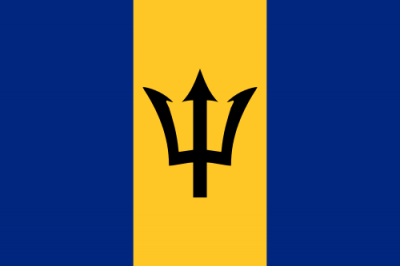



 *Track and field athletics
*Track and field athletics
 4x400 m Men
4x400 m Men
 *Track and field athletics
*Track and field athletics
 4x100 m Woman
4x100 m Woman
 Bahamas
Bahamas
 Commonwealth of Nations
Commonwealth of Nations

 Geography
Geography
 Caribbean
Caribbean

 Geography
Geography
 West Indies
West Indies
 Leichtathletik-Weltmeisterschaften
Leichtathletik-Weltmeisterschaften
 2001 Edmonton
2001 Edmonton
 Leichtathletik-Weltmeisterschaften
Leichtathletik-Weltmeisterschaften
 1999 Seville
1999 Seville


 Atomic bomb
Atomic bomb
 Commonwealth of Nations
Commonwealth of Nations

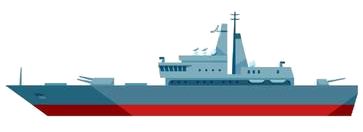
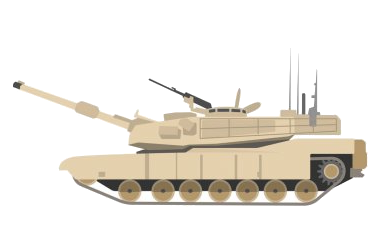
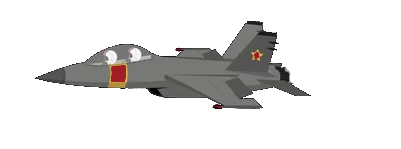
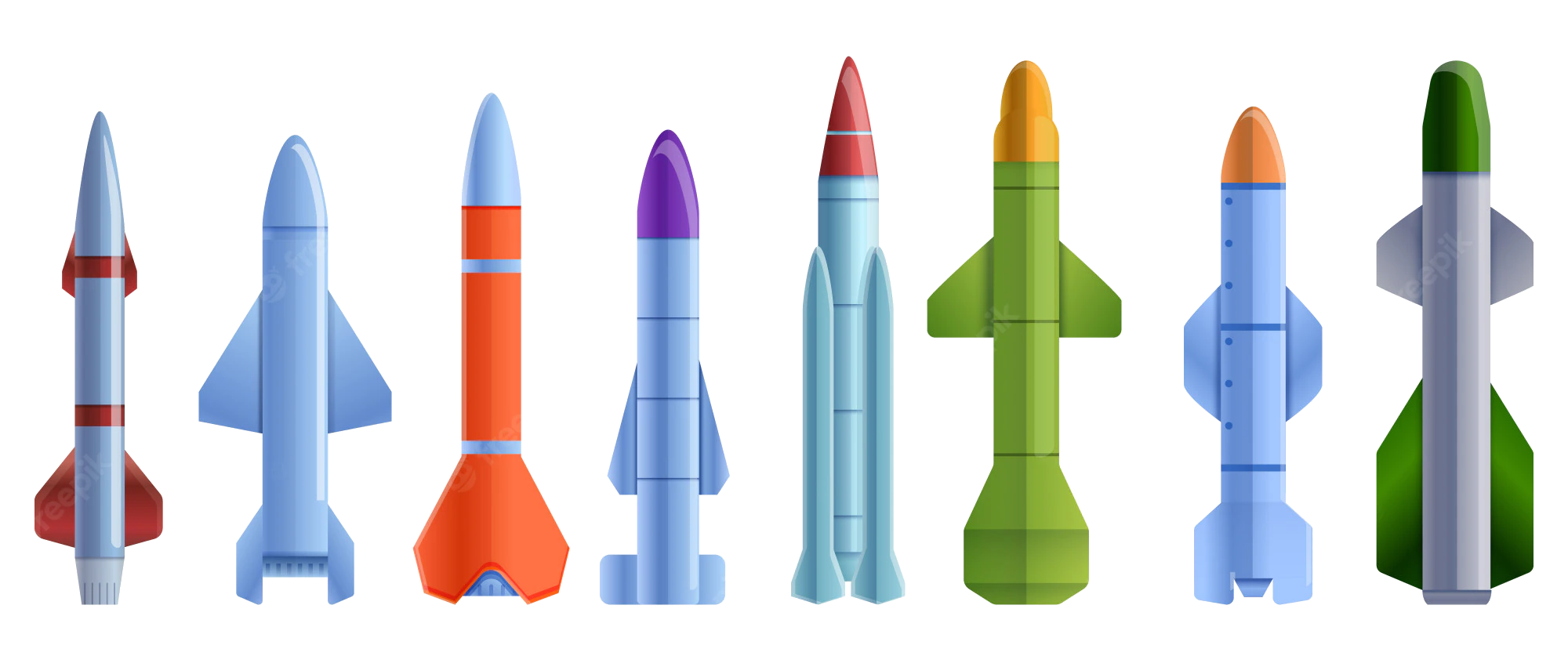 Military, defense and equipment
Military, defense and equipment
 Nuclear Weapon
Nuclear Weapon
 Pakistan
Pakistan
 Silk road
Silk road
 Shanghai Cooperation Organization
Shanghai Cooperation Organization

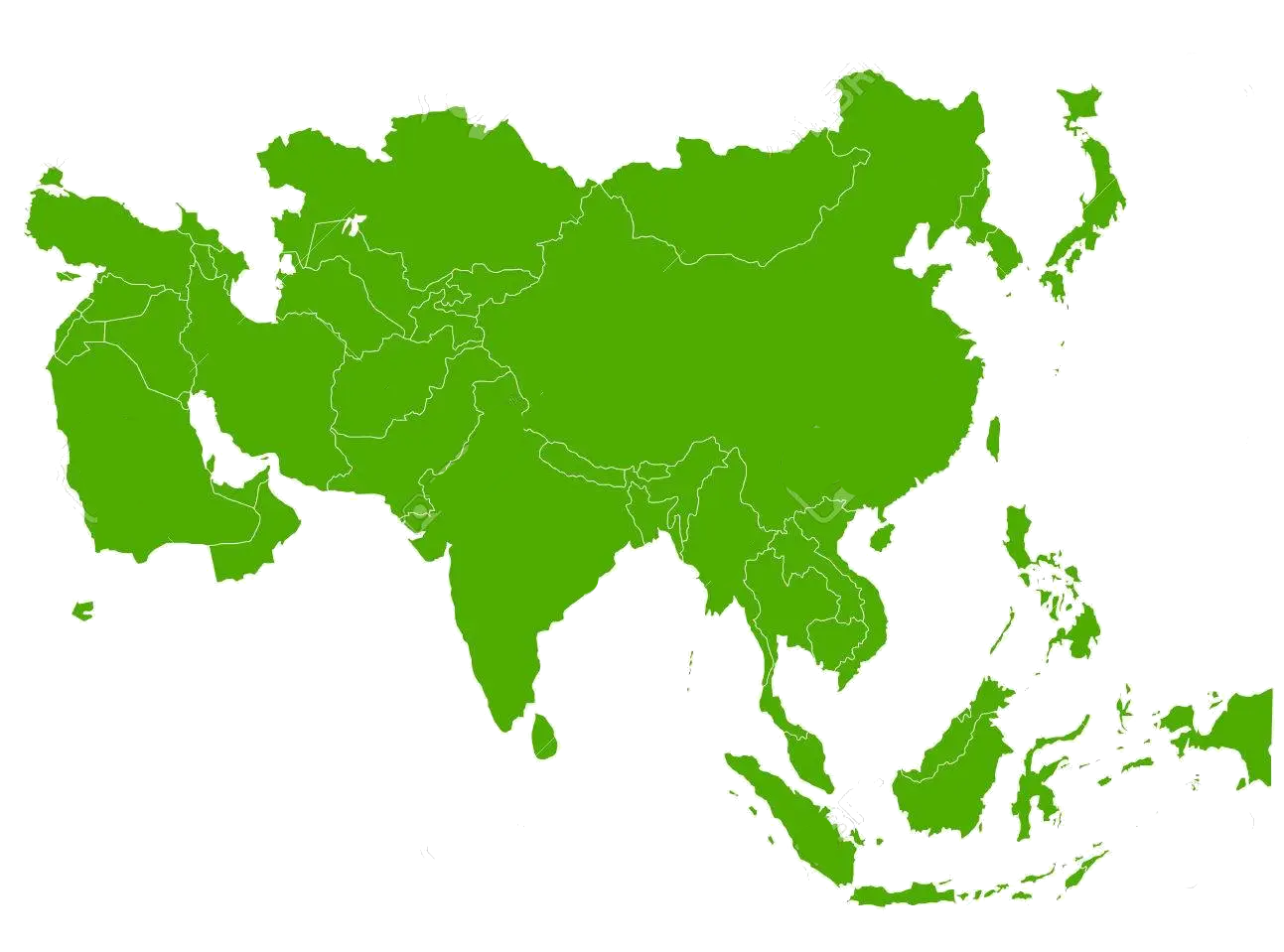 States of Asia
States of Asia
 *Track and field athletics
*Track and field athletics
 4x100 m Men
4x100 m Men
 *Track and field athletics
*Track and field athletics
 4x400 m Men
4x400 m Men
 Atomic bomb
Atomic bomb
 Commonwealth of Nations
Commonwealth of Nations

 Geography
Geography
 Leichtathletik-Weltmeisterschaften
Leichtathletik-Weltmeisterschaften
 2017 London
2017 London
 Leichtathletik-Weltmeisterschaften
Leichtathletik-Weltmeisterschaften
 1997 Athens
1997 Athens
 Leichtathletik-Weltmeisterschaften
Leichtathletik-Weltmeisterschaften
 1991 Tokyo
1991 Tokyo




 Military, defense and equipment
Military, defense and equipment
 Nuclear Weapon
Nuclear Weapon

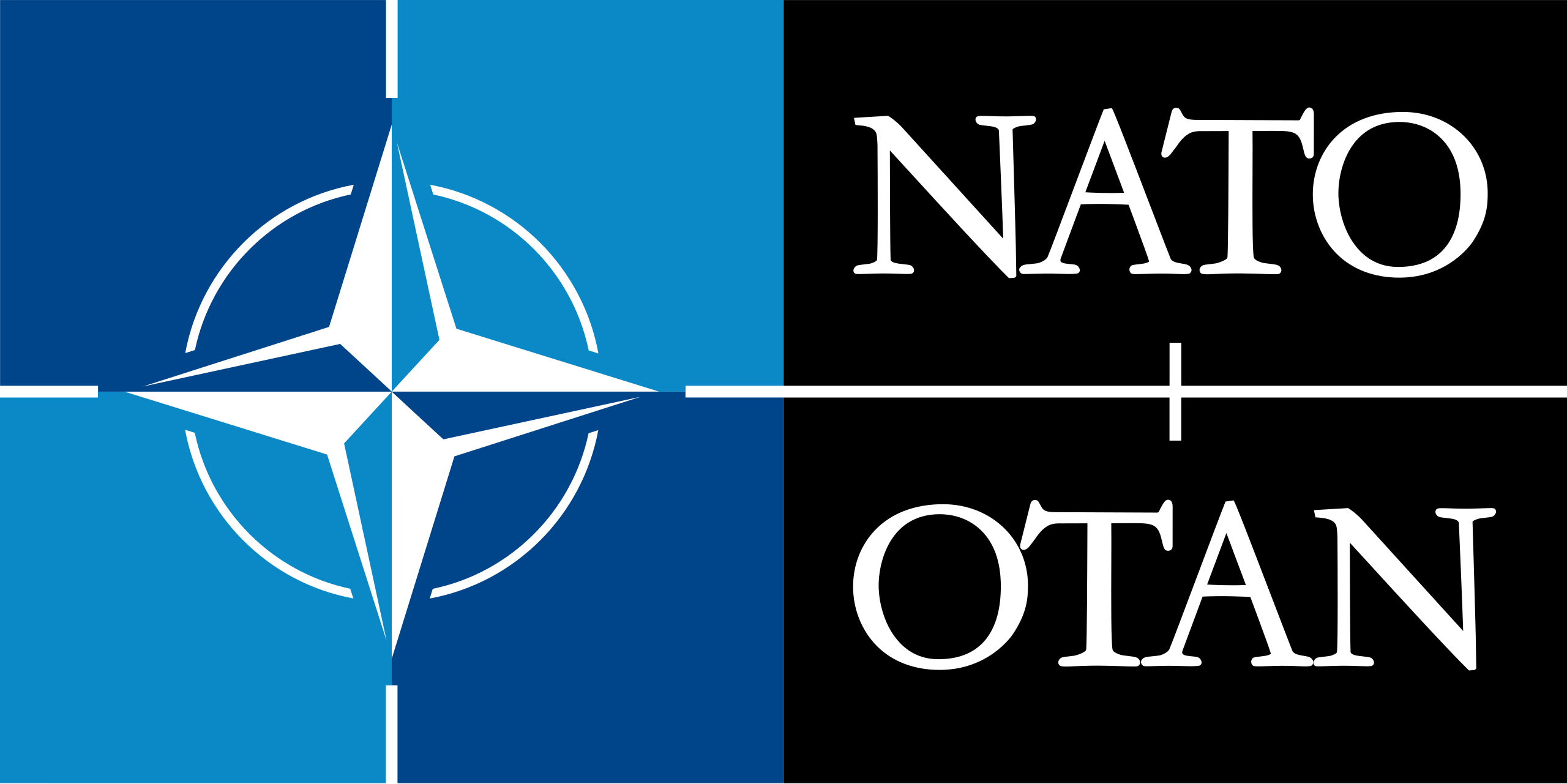 Mitglieder der NATO
Mitglieder der NATO

 Party and government
Party and government
 Group of the twenty most important industrial and emerging countries
Group of the twenty most important industrial and emerging countries

 Party and government
Party and government
 Group of Seven,G7
Group of Seven,G7

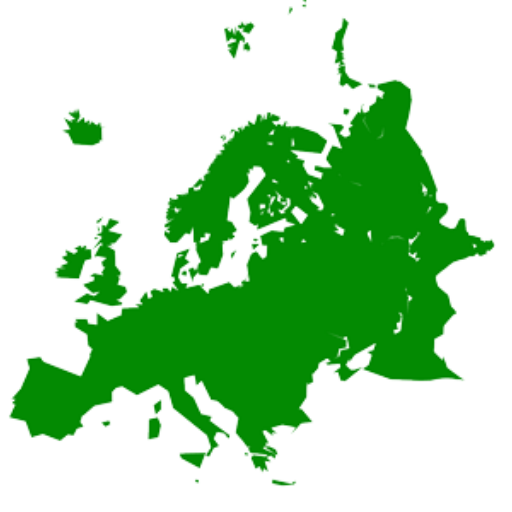 States of Europe
States of Europe

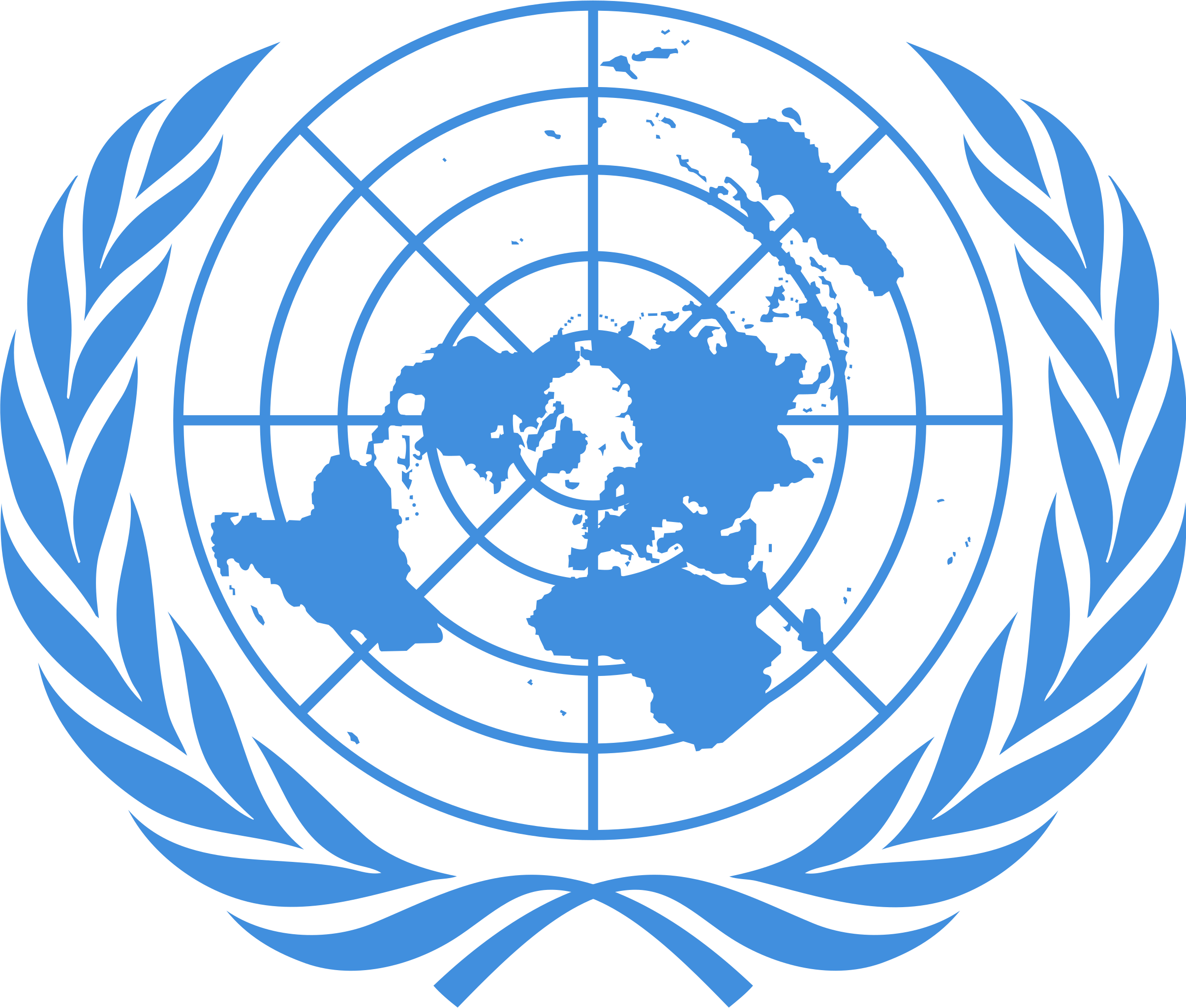 United Nations
United Nations
 United Nations Security Council
United Nations Security Council
 Hydrogen bomb
Hydrogen bomb

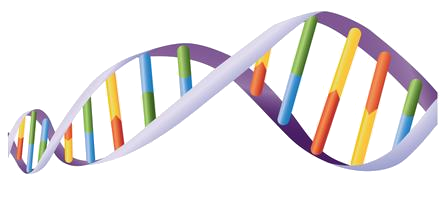 Science and technology
Science and technology

 Science and technology
Science and technology
 The first industrial revolution and its leaders and followers
The first industrial revolution and its leaders and followers



Das Vereinigte Königreich von Großbritannien und Nordirland (englisch ), kurz Vereinigtes Königreich (englisch [juːˌnaɪ̯.tʰɪd ˈkʰɪŋ.dəm], internationale Abkürzung: UK oder GB), ist ein auf den Britischen Inseln vor der Nordwestküste Kontinentaleuropas gelegener europäischer Staat und bildet den größten Inselstaat Europas.
Das Vereinigte Königreich ist eine Union aus den vier Landesteilen England, Wales, Schottland und Nordirland. Im täglichen Sprachgebrauch wird es auch schlicht als Großbritannien oder England bezeichnet. Jedoch stellt England in der eigentlichen Bedeutung nur den größten Landesteil dar, während Großbritannien die Hauptinsel der Britischen Inseln mit den Landesteilen England, Schottland und Wales bezeichnet.
Mit rund 66,4 Millionen Einwohnern[6] steht das Vereinigte Königreich unter den bevölkerungsreichsten Staaten Europas nach Russland und Deutschland an dritter Stelle. Es ist Gründungsmitglied der NATO sowie der Vereinten Nationen. Es ist Atommacht, ständiges Mitglied des UN-Sicherheitsrates und einer der G7-Staaten. Von 1973 bis 2020 war es Mitglied der EWG bzw. später der Europäischen Union.
大不列颠及北爱尔兰联合王国(英语:United Kingdom of Great Britain and Northern Ireland),国际间的标准简称为联合王国(英语:United Kingdom,缩写作UK)或者不列颠(英语:Britain),汉字文化圈通称“英国”[注 5][9][10](中文早期亦称“英联王国”[注 6]),是本土位于西欧并具有海外领地[注 7]的主权国家。英国位于欧洲大陆西北面,由大不列颠岛、爱尔兰岛东北部分及一系列较小岛屿组成[11]。英国和另一国家唯一的陆上国境线位于北爱尔兰,和爱尔兰共和国相邻[注 8]。英国由大西洋所环绕,东为北海,南为英吉利海峡,西南偏南为凯尔特海,与爱尔兰隔爱尔兰海相望。该国总面积达243,610平方千米(94,060平方英里),为世界面积第80大的主权国家及欧洲面积第11大的主权国家,人口约6636万,为全球第21名及欧洲第3名。
英国为君主立宪制国家,采用议会制进行管辖[12][13]。其首都伦敦为全球城市A++级别城市和国际金融中心,大都会区人口达1380万,为欧洲第三大[14]。现任英国君主为女王伊丽莎白二世,1952年2月6日即位。英国由四个构成国组成,分别为英格兰、苏格兰、威尔士和北爱尔兰[15],其中后三者在权力下放体系之下,各自拥有一定的权力[16][17][18]。三地首府分别为爱丁堡、加的夫和贝尔法斯特。附近的马恩岛、根西行政区及泽西行政区并非联合王国的一部分,而为皇家属地,英国政府负责其国防及外交事务[19]。
英国的构成国之间的关系在历史上经历了一系列的发展。英格兰王国通过1535年和1542年的联合法令将威尔士纳入领土。1707年联合法令使英格兰王国和苏格兰王国共组大不列颠王国,1801年大不列颠王国和爱尔兰王国共组大不列颠及爱尔兰联合王国。1922年爱尔兰中南部26个郡(面积占整个爱尔兰的约六分之五)脱离英国组成爱尔兰自由邦(当今爱尔兰的前身),最终造就了当今的大不列颠及北爱尔兰联合王国[注 9]。大不列颠及北爱尔兰联合王国亦有14块海外领地[20],为往日帝国的遗留部分。大英帝国在1921年达到其巅峰,拥有全球22%的领土,是有史以来面积最大的帝国。英国在语言、文化和法律体系上对其前殖民地保留了一定的影响,因而吸引许多以前英联邦的移民前来居住。
英国为发达国家,以名义GDP为量度是世界第五大经济体,以购买力平价为量度是世界第九大经济体。英国是世界首个工业化国家,工业革命使英国人的生产力大大提高,商业与财富极大的增长,更凭借著工业时代的船坚炮利,1763年—1945年英国为世界第一强国,其鼎盛时期的19世纪还被称作英国的世纪[21][22],当今英国仍是世界强国之一,在经济、文化、军事、科技、教育和政治上均有全球性的显著影响力[23][24]。英国为国际公认的有核国家,其军事开支位列全球第五[25][26]。1945年以来英国即为联合国安全理事会常任理事国。1973年—2020年英国是欧洲联盟(EU)及其前身欧洲经济共同体(EEC)的成员国。英国还是英联邦、欧洲委员会、七国财长峰会、七国集团、二十国集团、北大西洋公约组织、经济合作与发展组织和世界贸易组织成员国。
グレートブリテン及び北アイルランド連合王国(グレートブリテンおよびきたアイルランドれんごうおうこく、英: United Kingdom of Great Britain and Northern Ireland: UK)は、ヨーロッパ大陸の北西岸に位置し、グレートブリテン島・アイルランド島北東部・その他多くの島々から成る立憲君主制国家。首都はロンドン。日本語における通称の一例としてイギリス、英国(えいこく)がある(→#国名)。
イングランド、ウェールズ、スコットランド、北アイルランドという歴史的経緯に基づく4つの「カントリー(国)」が、同君連合型の単一の主権国家を形成している[1]。しかし、政治制度上は単一国家の代表的なモデルであり、連邦国家ではない。
国際連合安全保障理事会常任理事国の一国(五大国)であり、G7・G20に参加する。GDPは世界10位以内に位置する巨大な市場を持ち、ヨーロッパにおける四つの大国「ビッグ4」の一国である。ウィーン体制が成立した1815年以来、世界で最も影響力のある国家を指す列強の一つに数えられる。また、民主主義、立憲君主制など近代国家の基本的な諸制度が発祥した国でもある。
イギリスの擬人化としてはジョン・ブル、ブリタニアが知られる。
The United Kingdom of Great Britain and Northern Ireland, commonly known as the United Kingdom (UK or U.K.)[14] or Britain,[note 10] is a sovereign country located off the northwestern coast of the European mainland. The United Kingdom includes the island of Great Britain, the northeastern part of the island of Ireland, and many smaller islands.[15] Northern Ireland shares a land border with the Republic of Ireland. Otherwise, the United Kingdom is surrounded by the Atlantic Ocean, with the North Sea to the east, the English Channel to the south and the Celtic Sea to the southwest, giving it the 12th-longest coastline in the world. The Irish Sea separates Great Britain and Ireland. The total area of the United Kingdom is 94,000 square miles (240,000 km2).
The United Kingdom is a unitary parliamentary democracy and constitutional monarchy.[note 11][16][17] The monarch is Queen Elizabeth II, who has reigned since 1952, making her the world's longest-serving current head of state.[18] The United Kingdom's capital is London, a global city and financial centre with an urban area population of 10.3 million.[19]
The United Kingdom consists of four countries: England, Scotland, Wales and Northern Ireland.[20] Their capitals are London, Edinburgh, Cardiff and Belfast, respectively. Apart from England, the countries have their own devolved governments,[21] each with varying powers.[22][23] Other major cities include Birmingham, Glasgow, Leeds, Liverpool, and Manchester.
The nearby Isle of Man, Bailiwick of Guernsey and Bailiwick of Jersey are not part of the UK, being Crown dependencies with the British Government responsible for defence and international representation.[24] The medieval conquest and subsequent annexation of Wales by the Kingdom of England, followed by the union between England and Scotland in 1707 to form the Kingdom of Great Britain, and the union in 1801 of Great Britain with the Kingdom of Ireland created the United Kingdom of Great Britain and Ireland. Five-sixths of Ireland seceded from the UK in 1922, leaving the present formulation of the United Kingdom of Great Britain and Northern Ireland. The UK's name was adopted in 1927 to reflect the change.[note 12] There are fourteen British Overseas Territories,[25] the remnants of the British Empire which, at its height in the 1920s, encompassed almost a quarter of the world's landmass and was the largest empire in history. British influence can be observed in the language, culture and political systems of many of its former colonies.[26][27][28][29][30] The United Kingdom has the world's sixth-largest economy by nominal gross domestic product (GDP), and the ninth-largest by purchasing power parity (PPP). It has a high-income economy and a very high human development index rating, ranking 14th in the world. It was the world's first industrialised country and the world's foremost power during the 19th and early 20th centuries.[31][32] The UK remains a great power, with considerable economic, cultural, military, scientific and political influence internationally.[33][34] It is a recognised nuclear weapons state and is sixth in military expenditure in the world.[35] It has been a permanent member of the United Nations Security Council since its first session in 1946.
The United Kingdom is a leading member of the Commonwealth of Nations, the Council of Europe, the G7, the G20, NATO, the Organisation for Economic Co-operation and Development (OECD), Interpol and the World Trade Organization (WTO). It was a member of the European Union (EU) and its predecessor, the European Economic Community (EEC), for 47 years, between 1 January 1973 and withdrawal on 31 January 2020.
Le Royaume-Uni (prononcé en français : /ʁwajom‿yni/a Écouter), en forme longue le Royaume-Uni de Grande-Bretagne et d'Irlande du Nordb (en anglais : United Kingdom /juːˌnaɪtɪd ˈkɪŋdəm/c Écouter et United Kingdom of Great Britain and Northern Ireland)d, est un pays d'Europe de l'Ouest, ou selon certaines définitions, d'Europe du Nord, dont le territoire comprend l'île de Grande-Bretagne et la partie nord de l'île d'Irlande, ainsi que de nombreuses petites îles autour de l'archipel. Le territoire du Royaume-Uni partage une frontière terrestre avec la république d'Irlande, et est entouré par l'océan Atlantique au nord, la mer du Nord à l'est, la Manche au sud, la mer Celtique au sud-sud-ouest, la mer d'Irlande au sud-ouest et les mers intérieures de la côte ouest de l'Écosse au nord-ouest. Le Royaume-Uni couvre une superficie de 246 690 km2, faisant de lui le 80e plus grand pays du monde, et le 11e d'Europe. Il est le 22e pays plus peuplé du monde, avec une population estimée à 65,1 millions d'habitants. Le Royaume-Uni est une monarchie constitutionnelle7 ; il possède un système parlementaire de gouvernance8,3. Sa capitale est Londres, une ville mondiale et la première place financière au monde.
Le Royaume-Uni est composé de quatre nations constitutives : l'Angleterre, l'Écosse, le pays de Galles et l'Irlande du Nord. Les trois dernières ont des administrations dévolues9, chacune avec des pouvoirs variés10, basés dans leurs capitales régionales, respectivement Édimbourg, Cardiff et Belfast. Les bailliages de Guernesey, de Jersey et l'île de Man sont des dépendances de la Couronne et ne sont donc pas rattachés au pays11. De plus, le pays comprend quatorze territoires d'outre-mer12, disséminés sur plusieurs océans. Le Royaume-Uni est né en 1707, lorsque les royaumes d'Angleterre et d'Écosse s'unifièrent pour former le royaume de Grande-Bretagne, qui s'agrandit en 1801 en s'unifiant avec le royaume d'Irlande pour former le Royaume-Uni de Grande-Bretagne et d'Irlande. En 1922, l'Irlande du Sud fit sécession du Royaume-Uni, donnant naissance à l'État d'Irlande, amenant au nom officiel et actuel de « Royaume-Uni de Grande-Bretagne et d'Irlande du Nord ». Les territoires d'outre-mer, anciennement des colonies, sont les vestiges de l'Empire britannique, qui, jusqu'à la seconde moitié du XXe siècle, était le plus vaste empire colonial de l'histoire.
L'influence britannique peut être observée dans la langue, la culture, le système politique et juridique des anciennes colonies. Le Royaume-Uni est un pays développé. Il est en 2018 la cinquième puissance mondiale par son PIB nominal13 et la neuvième puissance en termes de PIB à parité de pouvoir d'achat. Berceau de la révolution industrielle, le pays fut la première puissance mondiale durant la majeure partie du XIXe siècle14,15. Le Royaume-Uni reste une grande puissance, avec une influence internationale considérable sur le plan économique, politique, culturel, militaire et scientifique16,17. Il est également une puissance nucléaire reconnue avec le sixième budget de la défense le plus élevé18. Le Royaume-Uni est membre du Commonwealth, du Conseil de l'Europe, du G7, du G20, de l'OTAN, de l'OCDE, de l'OMC, et membre permanent du Conseil de sécurité des Nations unies depuis 1946. Le Royaume-Uni a adhéré le 1er janvier 1973 à la CEE, devenue Union Européenne, puis en est sorti le 1er février 2020 à la suite de la victoire du «






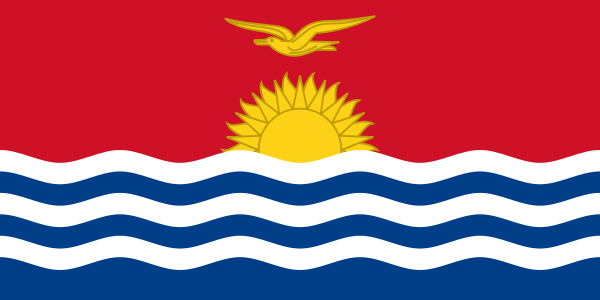
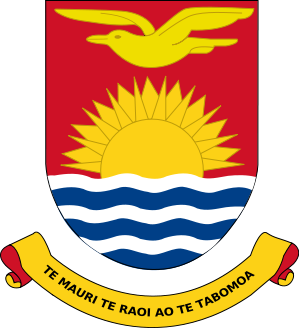
 *Track and field athletics
*Track and field athletics
 4x100 m Men
4x100 m Men
 Commonwealth of Nations
Commonwealth of Nations
 Canada
Canada
 Leichtathletik-Weltmeisterschaften
Leichtathletik-Weltmeisterschaften
 1997 Athens
1997 Athens
 Leichtathletik-Weltmeisterschaften
Leichtathletik-Weltmeisterschaften
 1995 Gothenburg
1995 Gothenburg

 Mitglieder der NATO
Mitglieder der NATO

 Party and government
Party and government
 Group of the twenty most important industrial and emerging countries
Group of the twenty most important industrial and emerging countries

 Party and government
Party and government
 Group of Seven,G7
Group of Seven,G7


Kanada (englisch und französisch Canada) ist ein Staat in Nordamerika, der zwischen dem Atlantik im Osten und dem Pazifik im Westen liegt und nordwärts bis zum Arktischen Ozean reicht. Bundeshauptstadt ist Ottawa, die bevölkerungsreichste Stadt ist Toronto. Die einzige Landgrenze ist jene zu den USA im Süden und im Nordwesten. Kanada ist nach Russland der zweitgrößte Staat der Erde, hat aber mit knapp 38 Millionen Einwohnern nur eine Bevölkerungsdichte von 3,6 Personen pro km².
Die Besiedlung durch die First Nations begann spätestens vor 12.000 Jahren, die Inuit folgten vor rund 5000 Jahren. Ab dem späten 15. Jahrhundert landeten Europäer an der Ostküste und begannen um 1600 mit der Kolonisierung. Dabei setzten sich zunächst Franzosen und Engländer fest. In dieser Zeit breitete sich die Bezeichnung „Canada“ aus, das ursprünglich ein Name für ein Irokesendorf war. Frankreich trat 1763 seine Kolonie Neufrankreich an Großbritannien ab. Im Jahre 1867 gründeten drei britische Kolonien die Kanadische Konföderation. Mit dem Statut von Westminster erhielt das Land 1931 gesetzgeberische Unabhängigkeit, weitere verfassungsrechtliche Bindungen zum Vereinigten Königreich wurden 1982 aufgehoben. Nominelles Staatsoberhaupt ist Königin Elisabeth II., die durch den Generalgouverneur von Kanada vertreten wird.
Kanada ist ein auf dem Westminster-System basierender parlamentarisch-demokratischer Bundesstaat und eine parlamentarische Monarchie. Amtssprachen sind Englisch und Französisch. Die Unabhängigkeitsbestrebungen Québecs, die Stellung der frankophonen Kanadier und die Rechte der indigenen Völker (neben den First Nations und Inuit die Métis) sind wichtige Konfliktlinien in Staat und Gesellschaft. Die Themen Klimawandel und Umweltschutz, Einwanderungspolitik und Rohstoffabhängigkeit sowie das Verhältnis zum südlichen Nachbarn USA, von dem kulturell und historisch bedingt ein ambivalentes Bild besteht, kennzeichnen die öffentlichen Debatten.
加拿大(英语、法语:Canada,IPA读音:/ˈkænədə/(英)/kanada/(法))为北美洲国家,西抵太平洋,东至大西洋,北滨北冰洋,东北方与丹麦领地格陵兰相望,东部与圣皮埃尔和密克隆相望,南方及西北方与美国接壤。加拿大的领土面积达998万4670平方千米,为全球面积第二大国家。加拿大素有“枫叶之国”的美誉,渥太华为该国首都。加拿大被《福布斯》列于2020年退休宜居国的名单中[8]。
加拿大在1400年前即有原住民在此生活。15世纪末,英国和法国殖民者开始探索北美洲的东岸,并在此建立殖民地。1763年,当七年战争结束后,法国被迫将其几乎所有的北美殖民地割让予英国。在随后的几十年中,英国殖民者向西探索至太平洋地区,并建立了数个新的殖民地。1867年7月1日,1867年宪法法案通过,加拿大省分裂为安大略和魁北克两省,与新不伦瑞克、新斯科舍三个英属北美殖民地组成加拿大联邦。在随后100多年里,其它几块英属北美殖民地陆续加入联邦,组成现代加拿大。1931年12月11日,英国通过威斯敏斯特法令,令加拿大成为独立国家,但国家元首依旧是当时的英国国王乔治五世,且英国国会依旧掌握有加拿大的修宪权。1933年和1949年,加拿大民事案件和刑事案件的终审权分别从英国枢密院司法委员会移交至加拿大最高法院。1982年4月17日,英国女王兼加拿大女王伊丽莎白二世签署命令,将加拿大宪法修宪权移交加拿大国会,至此加拿大与英国的特殊关系终结。
加拿大是实行联邦制、君主立宪制及议会制的国家,由十个省和三个地区组成,女王伊丽莎白二世为国家元首及加拿大君主,而加拿大总督为其及政府的代表。加拿大是双语国家,英语和法语为官方语言,原住民的语言被认定为第一语言。由于地处高纬度及地广人稀,该国一直奉行积极吸纳外来移民的政策,以至人口亦以移民为主,有近五分之一的国民于国外出生,是世界上拥有种族及文化最为多元的国家之一。近年来移民大部分来自亚洲。[9]
得益于丰富的天然资源和高度发达的科技,加拿大是富裕、经济发达的国家。以国际汇率计算,加拿大的人均国内生产总值在全世界排名第十六,人类发展指数排名第十。它在教育、政府的透明度、自由度、生活品质及经济自由的国际排名都名列前茅。积极参与国际事务,是联合国、北大西洋公约组织、北美空防司令部、七大工业国组织、二十国集团、亚太经济合作组织、经济合作与发展组织、英联邦和法语圈的成员国及太平洋岛国论坛的对话伙伴。
カナダ(英・仏: Canada、英語発音: /ˈkænədə/ ![]() 聞く キャナダ[2]、フランス語発音: /kanada/ カナダ[3])は、北アメリカ大陸北部に位置し、10の州と3の準州からなる連邦立憲君主制国家。首都はオタワ(オンタリオ州)。
聞く キャナダ[2]、フランス語発音: /kanada/ カナダ[3])は、北アメリカ大陸北部に位置し、10の州と3の準州からなる連邦立憲君主制国家。首都はオタワ(オンタリオ州)。
イギリス連邦加盟国であり、英連邦王国のひとつ。アメリカ合衆国と国境を接する。国土面積は世界最大のロシアに次いで広い。
歴史的に先住民族が居住する中、外からやってきた英仏両国の植民地連合体として始まった。1763年からイギリス帝国に包括された。1867年の連邦化をきっかけに独立が進み、1931年ウエストミンスター憲章で承認され、1982年憲法制定をもって政体が安定した[4]。一連の過程においてアメリカと政治・経済両面での関係が深まった。連邦制をとり、連邦政府の運営は首相を中心に行われている。
Canada is a country in the northern part of North America. Its ten provinces and three territories extend from the Atlantic to the Pacific and northward into the Arctic Ocean, covering 9.98 million square kilometres (3.85 million square miles), making it the world's second-largest country by total area. Its southern border with the United States, stretching 8,891 kilometres (5,525 mi), is the world's longest bi-national land border. Canada's capital is Ottawa, and its three largest metropolitan areas are Toronto, Montreal, and Vancouver.
Various indigenous peoples inhabited what is now Canada for thousands of years before European colonization. Beginning in the 16th century, British and French expeditions explored and later settled along the Atlantic coast. As a consequence of various armed conflicts, France ceded nearly all of its colonies in North America in 1763. In 1867, with the union of three British North American colonies through Confederation, Canada was formed as a federal dominion of four provinces. This began an accretion of provinces and territories and a process of increasing autonomy from the United Kingdom. This widening autonomy was highlighted by the Statute of Westminster of 1931 and culminated in the Canada Act of 1982, which severed the vestiges of legal dependence on the British parliament.
Canada is a parliamentary democracy and a constitutional monarchy in the Westminster tradition, with a monarch and a prime minister who serves as the chair of the Cabinet and head of government. The country is a realm within the Commonwealth of Nations, a member of the Francophonie and officially bilingual at the federal level. It ranks among the highest in international measurements of government transparency, civil liberties, quality of life, economic freedom, and education. It is one of the world's most ethnically diverse and multicultural nations, the product of large-scale immigration from many other countries. Canada's long and complex relationship with the United States has had a significant impact on its economy and culture.
A developed country, Canada has the seventeenth-highest nominal per-capita income globally as well as the thirteenth-highest ranking in the Human Development Index. Its advanced economy is the tenth-largest in the world, relying chiefly upon its abundant natural resources and well-developed international trade networks. Canada is part of several major international and intergovernmental institutions or groupings including the United Nations, NATO, the G7, the Group of Ten, the G20, the North American Free Trade Agreement and the Asia-Pacific Economic Cooperation forum.
Le Canada (prononcé [kanadɔ]4 Écouter ou [kanada]5 Écouter ; en anglais [ˈkænədə]6 Écouter) est un pays situé dans la partie septentrionale de l'Amérique du Nord. Monarchie constitutionnelle à régime parlementaire constituée en fédération, composée de dix provinces et trois territoires, le pays est encadré par l'océan Atlantique à l'est-nord-est et à l'est, par l'océan Arctique au nord-nord-ouest et au nord-est, enfin par l'océan Pacifique à l'ouest. Le Canada comprend deux frontières terrestres avec les États-Unis, l'une au sud et l'autre à l'ouest-nord-ouest avec l'Alaska ainsi qu'une frontière maritime avec la France, par le biais de l'archipel de Saint-Pierre-et-Miquelon, et le Danemark, par le biais du Groenland. Le territoire terrestre canadien s'étend sur 10 millions de kilomètres carrés, ce qui en fait le deuxième pays du monde pour la superficie après la Russie7. En 2019, il compte plus de 37 millions d'habitants1 et est ainsi le 37e pays du monde en ce qui concerne la population. Le territoire contient plus de 31 700 lacs8, ce qui fait du Canada le pays possédant parmi les plus grandes réserves d'eau douce du globe9,10. Les langues officielles au niveau fédéral sont l'anglais et le français. La capitale fédérale est Ottawa et la monnaie le dollar canadien11.
Les premiers occupants du territoire canadien ont été les Amérindiens, dont les migrations remontent à environ 15 000 ans12 lors de la dernière glaciation qui a abaissé le niveau des océans et créé un pont terrestre reliant l'Eurasie à l'Amérique, permettant à ceux-ci de s'installer13.
Si des Vikings s'installent dès le XIe jusqu'au XIVe siècle, les premières explorations des Européens débutent à la fin du XVe siècle, culminant avec les expéditions du Français Jacques Cartier dans le golfe du Saint-Laurent. Après quelques expériences infructueuses dans la première moitié du XVIe siècle, le 5 août 1583, la colonie anglaise de Terre-Neuve est fondée, suivie des premiers comptoirs pérennes français sur le continent entre 1600 et 1608, amorçant le processus de la colonisation européenne. Par la suite, d'autres colonies britanniques et françaises sont établies, notamment dans la région de la côte Atlantique (Nouvelle-Écosse, Acadie), dans la vallée du fleuve Saint-Laurent et la péninsule du Labrador (Nouvelle-France) ainsi que dans la zone arctique, tandis que d'autres puissances européennes telles l'Espagne et la Russie explorent le reste du territoire canadien. À la suite de divers conflits dont surtout la guerre de Succession d'Espagne (1701-1714), la guerre de la Conquête (1754-1760) et la guerre d'indépendance des États-Unis (1775-1783), la Grande-Bretagne gagne et perd des territoires au XVIIIe siècle, aboutissant à ce qui correspond au territoire canadien d'aujourd'hui. Trois de ces colonies se fédèrent le 1er juillet 1867 et forment le dominion du Canada, nation indépendante sous domination partielle de la Couronne britannique. Sa souveraineté totale est ensuite garantie par la déclaration Balfour de 1926, le Statut de Westminster de 1931 et le rapatriement de sa Constitution en 1982.
L'histoire contemporaine du Canada a été marquée par une vigoureuse expansion territoriale, la ruée vers l'or et la participation à la Première Guerre mondiale. Le pays fut durement touché par la Grande Dépression en 1929 mais son économie rebondit grâce à sa participation à la Seconde Guerre mondiale, où il émergea comme puissance moyenne et fut l'un des vainqueurs en tant que membre des Alliés14.
En 2015, le Canada possède le dixième revenu par habitant le plus élevé15, et est classé neuvième par le PNUD en termes d'indice de développement humain16. Il s'agit de la dixième puissance économique mondiale par son PIB en 2017, les principaux secteurs de son économie étant les services, les télécommunications, l'agriculture, l'énergie, l'aéronautique et la construction automobile. Il entretient de forts liens avec les États-Unis (pays anglo-saxon le plus proche et partageant une partie de son histoire), qui sont son principal client et fournisseur avec lequel perdure une des relations les plus intimes et les plus approfondies au monde entre deux nations. Le pays est un des meneurs en matière de recherche scientifique17, et se range parmi les plus éduqués du monde en étant classé premier par le nombre d'adultes possédant une éducation post-secondaire, avec 51 % d'entre eux ayant au moins atteint un diplôme post-secondaire chez sa population âgée de 25 à 64 ans18. Le Canada est membre du G7, du G20, de l'Accord de libre-échange nord-américain (ALENA), de l'Organisation du traité de l'Atlantique nord (OTAN), de la Coopération économique pour l'Asie-Pacifique (APEC), de l'Organisation des États américains (OEA), de l'Organisation de coopération et de développement économiques (OCDE), de l'Organisation des Nations unies (ONU), du Commonwealth et de l'Organisation internationale de la francophonie.
Il Canada (AFI: /ˈkanada/)[5] o Canadà (AFI: /kanaˈda/)[6] è uno Stato indipendente dell'America Settentrionale[7] bagnato dall'Atlantico a est, dal Mar Glaciale Artico a nord e dall'Oceano Pacifico a ovest. Con una superficie di 9897170 km² è il secondo paese del mondo per superficie totale dopo la Russia. Confina solo con il territorio degli Stati Uniti d'America: quelli continentali a sud, in buona parte lungo la linea del 49º parallelo Nord, e con lo Stato dell'Alaska a nord-ovest quasi interamente lungo il 141º meridiano Ovest:[7] si tratta del confine terrestre tra due Stati più lungo del mondo (8893 km).
Abitato, prima dell'arrivo europeo sul continente, da popolazioni aborigene, il territorio dell'attuale Canada fu colonizzato da Francia e Regno Unito a inizio XVII secolo[7] a partire dalla costa atlantica. I francesi persero in seguito i loro territori progressivamente a favore del Regno Unito: dapprima (1713) con il trattato di Utrecht alla fine della guerra di successione spagnola, con cui Terranova e la baia di Hudson furono cedute da Luigi XIV; a seguire nel 1763 dopo la sconfitta nella guerra franco-indiana, teatro nordamericano della guerra dei sette anni e, infine, con la vendita di Napoleone (1803) della Louisiana francese agli Stati Uniti d'America e delle sue ultime rimanenze oltre il confine canadese al Regno Unito. Il 1º luglio 1867 nacque la federazione canadese con l'unione delle tre colonie del Nord America Britannico di Nuova Scozia, Nuovo Brunswick e Canada,[8] che in seguito divennero quattro per la scissione della provincia del Canada in Ontario e Québec. Nel corso del tempo si aggiunsero sempre più province che avrebbero poi formato l'odierno stato nordamericano. Costituitosi in Stato unitario il 1º luglio 1867 come Confederazione canadese per iniziativa della Corona britannica, divenne formalmente indipendente l'11 dicembre 1931, data di promulgazione dello statuto di Westminster con cui il Regno Unito affrancò molti dei suoi ex dominion. Infine, con la nuova legge sul Canada del 1982 (il cosiddetto patriation o "rimpatrio") il Regno Unito abdicò anche al potere formale di modifica della costituzione canadese garantitogli dallo Statuto del 1931.
Il Canada è uno Stato membro del Commonwealth britannico del quale è uno dei sedici reami: di conseguenza, benché indipendente,[7] ha come capo di Stato il sovrano del Regno Unito, al 2020 la regina Elisabetta II che, nelle questioni di Stato riguardanti il Canada, agisce con il titolo di Elisabetta II Regina del Canada. In rappresentanza del sovrano agisce localmente il governatore generale del Canada, il quale è capo di Stato de facto, avendo le prerogative di accreditare il corpo diplomatico, assegnare l'incarico di primo ministro e nominare i giudici della Corte suprema, convocare le elezioni generali federali e in talune occasioni rappresentare il Paese a livello internazionale. Dal 1959 esiste la prassi non ufficiale di nominare alternativamente un governatore generale anglofono e uno francofono per rispetto dei due maggiori gruppi linguistici del Paese.
Il sistema politico è


